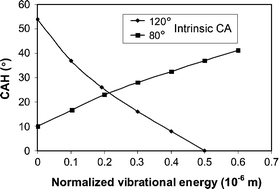Characterization of superhydrophobic behavior: effect of vibrational energy
Abstract
It has recently been recognized that both maximum (or advancing) contact angle and contact angle hysteresis (or sliding angle) should be used to characterize superhydrophobic surfaces. In this Opinion article, we emphasize that this is still inadequate, and that the crucial role of vibrational energy from various sources should be taken into account. Furthermore, a systematic investigation into the origin and nature of vibrational energy and its effect on contact angle and contact angle hysteresis of superhydrophobic surfaces is suggested.


 Please wait while we load your content...
Please wait while we load your content...